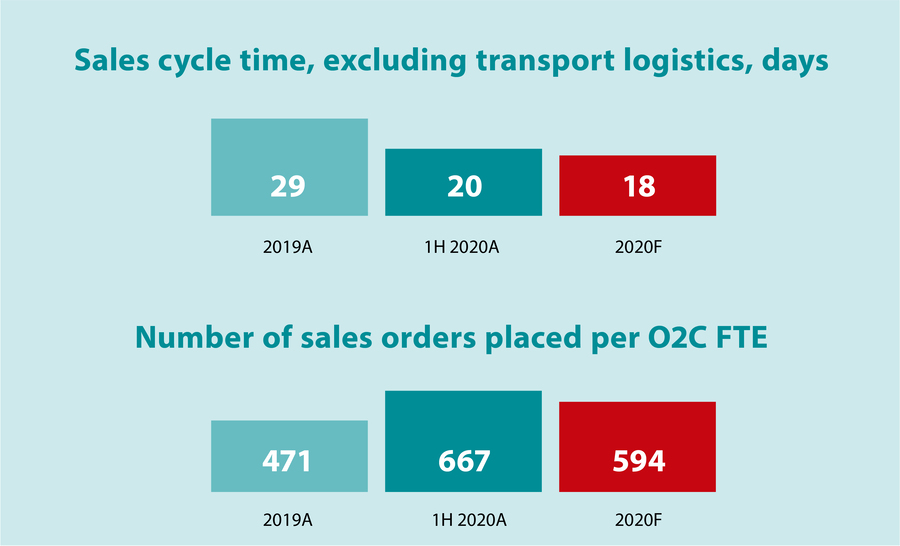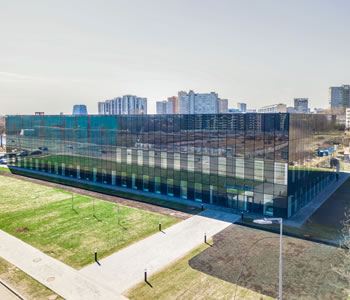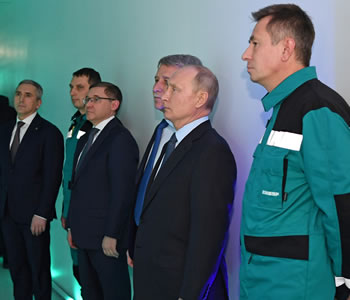SIBUR embraces a customer-centric business model. New product launches and business process setup are all centred around customer needs and demands. Maria Borisova, Head of SIBUR’s Customer Service Centre, has shared with us how the Company’s customer engagements have changed and the new resources available when placing an order.
– How does the Customer Service Centre differ fr om other functions? How do customers benefit from your services?
– The Customer Service Centre is a one-stop-shop for signing contracts, placing orders, receiving invoices or shipping products, serving customers across all regions. We offer the same level of service to all our customers and ensure a responsive and seamless experience of using end-to-end processes related to the Company’s other functions, which translates into rapid and high-quality order fulfilment.
Our task is to offer our customers services and products that meet their ever-evolving needs
– What is the global goal of transforming the customer service segment?
– The Company set ambitious goals to achieve its customer focus targets, including improving service standards and building its processes and value proposition based on customer feedback. This transition requires a fundamental mindset shift that implies that all business processes are built around customer needs and expectations. SIBUR understands the importance of a customer-centric approach, described as a standalone focus area in the Company’s 2025 Development Strategy. Our task is to offer our customers services and products that meet their ever-evolving needs. We need to take into account the Customer Satisfaction Index (CSI), a non-financial metric, to retain existing customers and boost our sales.
– What transformations does SIBUR’s new strategy require?
– SIBUR’s customer-centric transformation aims to turn CX best practices into effective solutions across five areas:
-
In-depth customer understanding
We are planning to achieve this by maximising the sales of tailored products and solutions through our sectoral sales units and PolyLab.
-
People and organisation
The combined organisation comprised of the Company’s Customer Service Centre, marketing and overall technical service functions will improve cross-functional interaction while setting up a single governance model, common KPIs and process requirements for related functions.
-
Customer service excellence
Our goal is to build a service framework aligned with best practices, including speed, quality and a high level of service. To achieve this goal, we have introduced a set of clearly-defined service standards and customer service models.
-
Surveys and customer voice
We consistently monitor customer satisfaction throughout the customer journey through a feedback collection and analysis system, measuring satisfaction metrics for each function.
-
Implementing changes in business processes
Customer feedback is transformed into specific actions within the Company, with cross-functional teams employed to improve performance across all operations and processes.
Our goal is to build a service framework aligned with best practices, including speed, quality and a high level of service. To achieve this goal, we have introduced a set of clearly-defined service standards and customer service models
– What new tools are used to improve customer service?
Dashboard: a tool to manage functional performance. It is a graphic representation of the sales process step-by-step, including its duration in business days with additional metrics affecting the process’ duration displayed under each step and monthly data updates. The dashboard makes the entire process chain more transparent, while also helping to identify and track deviations from a standard journey, align and standardise processes between areas and develop tools for customers to reach users.
Contract tracker: a report consolidating information on transactions at different stages, including the contract, shipment, delivery and payment details. A consolidated report spares the need to keep non-system files or download and combine multiple other reports, and provides transaction data in real time, eliminating the risk of data transfer errors. All information in the report is available online and is upd ated in parallel with system documents updates.
Inquiries via the personal account: a tool to accumulate all customer inquiries in one source while tracking turnaround times, with partially automated responses. For example, we have already automated responses to requests for draft reconciliation reports received via personal accounts.
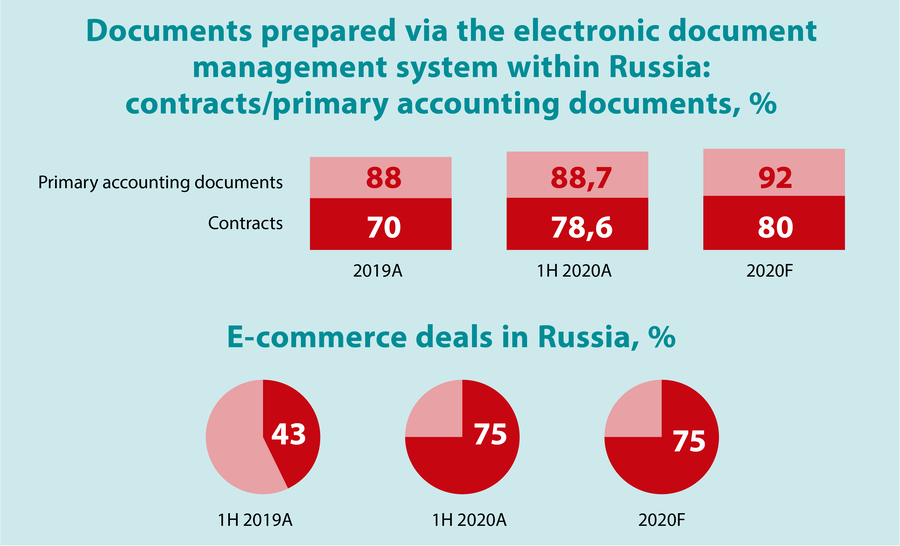
The changes relate not only to internal processes but also to providing customers with access to the most popular services, including financial ones. Currently, the personal account’s functionality available directly through its interface includes viewing amounts credited to the bank account and services offered by a major Russian bank lending to SMEs. In the future, we are planning to add other functionalities to the tool, such as access to payment schedules and payment services of various banks. We will streamline our logistics services to track cargo delivery: the currently available functionality includes viewing shipment statuses for different modes of transport, but we are planning to introduce online cargo tracking. The first pilot truck monitoring projects will be launched early next year.
Every problem or idea raised is noted and discussed with the customer
– How did customer and partner feedback change, and what effect is this having on the Company’s wider operations?
– To exceed our customers’ expectations, we have introduced a new approach to surveys via the e-Commerce platform and customers’ personal accounts.
Customers are surveyed via our key points of contact:
-
We do not ask customers what we already know, i.e. the products they bought and the type of delivery they used. Surveys are tailored to each customer to collect targeted feedback.
-
Depending on the survey type, the process takes from one to ten minutes, with links available in the customer’s mail box and via the e-Commerce interface.
-
All scores are saved on the customer’s file to form a living customer profile, wh ere all personal suggestions and comments since first contact are stored.
-
If low scores or negative feedback are posted, a process manager receives a notice with a fixed timeframe to respond to the customer’s situation.
One of the benefits of in-house surveys is that most customers prefer to have their identities known during the survey, so that we can give them a tailored service. Every problem or idea raised is noted and discussed with the customer. Still, anonymous answers receive the same weight in the analysis, although we really find it a shame when we cannot follow up with the customer on positive feedback about our work.
– What do you think about the Customer Service Centre’s results for the year? How did the pandemic affect your customer service priorities?
– We hope that customers will appreciate the benefits of our evolving one-stop service package, service popularity assessment and feedback-based service satisfaction measurement method. We have accelerated the execution of contract documents and transport ordering. With a new model of shipment planning based on customer information, we replenish our stocks and ship products with a 90%+ on-time accuracy. We have achieved and maintain the optimal turnaround times for service processes through the joint effort of all back-office functions at the Company: logistics, supply chain management and the Business Support Centre. By working together, we were able to achieve strong service performance.
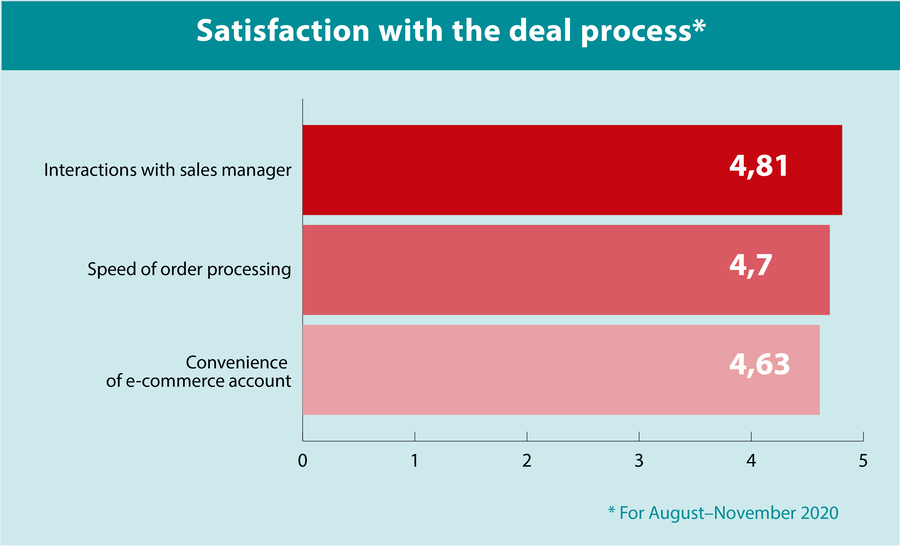
The pandemic certainly became a serious challenge for both SIBUR’s team and its customers and consumers. Since the Company has se t a course on digitalising processes and tools over the last five years, we were ready to adopt the remote operating model without compromising on performance. Of course, customer priorities have shifted, e.g. towards faster service, and these changes in end consumers’ needs affect our customers and demand for our products. In this situation, it is critical that we immediately and accurately respond to market needs, with the entire chain of operating processes at the Company required to work rapidly and smoothly.
– What are the tasks of the Customer Service Centre for the short term?
-
Maximising customer service personalisation
We would like to maximise our knowledge and understanding of the customer’s preferences, hence we need as many insights about them as possible. Information technologies enable effective data collection and use.
-
Response and turnaround times
Customers expect fast feedback, rapid responses to their inquiries and, most importantly, that their issues are resolved as soon as possible.
-
Developing online tools
We already have in place a 24/7 chatbot to respond to customer questions. Our customers can also place their orders via their personal accounts on a 24/7 basis. Next year, our customers will be able to access online information on their orders and payment statuses, as well as track their cargo shipments via the e-Commerce platform.
The world is going online by leaps and bounds, be it in business or personal communication, but we must always remember that there is a real customer and consumer behind every message. Rapid and honest responses to every inquiry need to remain at the heart of the entire customer service. We always hear and value every customer and are happy to support our partners.
Dear SIBUR customers,
Please email your suggestions and comments regarding the Customer Service Centre’s work to client-service@sibur.ru
Download PDF


